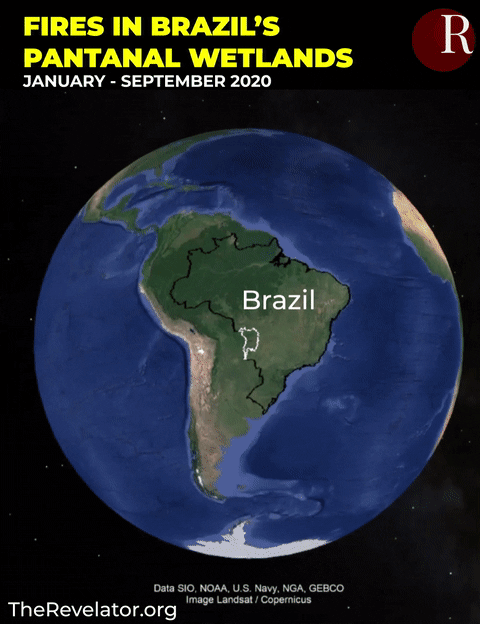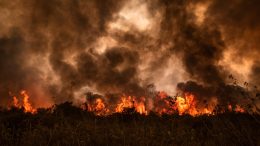One of the world’s most important ecosystems is on fire.
Since the beginning of the year, Brazilian scientists have identified more than 3,600 fires in the Pantanal, the world’s largest tropical wetlands. The fires have burned at least 14,000 square miles, according to analysis by the Federal University of Rio de Janeiro — about 16% of the Pantanal. NASA data puts the destruction even higher, at more than 16,000 square miles.
The fires, as you might expect, are big enough to see from space.
But what does that look like in context? By examining data from NASA satellites, we developed an animated representation of the fires, showing how they’ve grown throughout 2020 and how destructive they are now. You can see the results below:
 Of course, fire is a natural thing in the Pantanal — which is home to Indigenous communities and more than 12,000 vertebrate species — but this year’s wildfires are three times as large as what the region experienced in 2019.
Of course, fire is a natural thing in the Pantanal — which is home to Indigenous communities and more than 12,000 vertebrate species — but this year’s wildfires are three times as large as what the region experienced in 2019.
Many of these fires appear to have been human-caused, but they’ve been exacerbated by climate change. The region has experienced a severe drought and near-record-high temperatures this past year due to shifts in the Atlantic Multidecadal Oscillation, NASA scientist Doug Morton told Voice of America. That’s similar to what’s happened in the United States following changes in the El Niño weather pattern.
“Everything is suffering,” farmhand Dorvalino Conceicao Camargo told Al Jazeera as he worked to fight one of the fires.
Biologists told the news service they have encountered thousands of dead or wounded animals, including jaguars, caiman and snakes. One of the most important sites for threatened hyacinth macaws (Anodorhynchus hyacinthinus) has been particularly hard-hit, according to Mongabay.
And here’s the worst part: Experts say these fires are bad enough that they’ll make it more likely for the region to experience additional burning events in the years ahead. Given the Pantanal’s important value as a carbon sink, that poses a problem not just for this vital wetland but for the planet as a whole.
Data source: Jpss1-viirs-c2 via NASA FIRMS Archive, January 1 to September 16, 2020.


